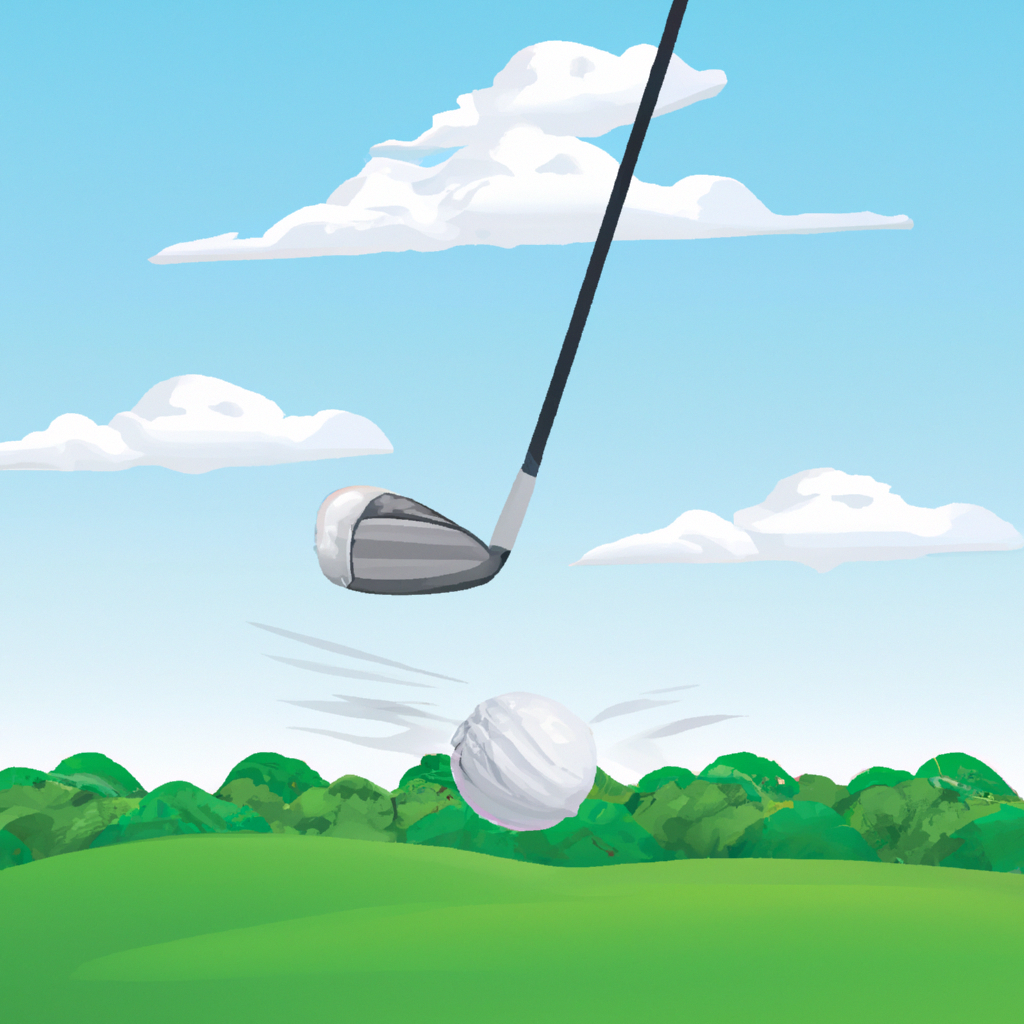You’re about to embark on a journey of golf knowledge where we uncover the intriguing concept of a Mulligan in the world of golf. If you’ve ever wondered what a Mulligan is, you’re in for a treat. Picture this: you take a swing, and the ball veers wildly off course – a moment of frustration ensues. But fear not, for a Mulligan is like a magical golf do-over that grants you another chance at that perfect shot. So, get ready to explore the origins and rules behind this golfing phenomenon and discover how it can enhance your golfing experience.
Understanding the Concept of a Mulligan in Golf
Golf is a sport that requires precision, skill, and patience. However, even the most experienced golfers sometimes find themselves in situations where they wish they could take back a shot and have a second chance. That’s where the concept of a Mulligan comes into play. A Mulligan is a term used in golf to describe the practice of taking a second shot without incurring a penalty. In this article, we will delve into the definition, origin, purpose, rules, and controversies surrounding the use of a Mulligan in golf. We will also explore the benefits and disadvantages of using a Mulligan and discuss some alternatives to this practice.

Definition of a Mulligan
A Mulligan, in the world of golf, refers to a second attempt at a shot that is given to a player without any penalty. It is an unofficial but widely accepted practice among golfers and is also commonly referred to as a “do-over” or a “free shot.” The purpose of a Mulligan is to allow players to correct a poorly played shot and potentially improve their overall score or enjoyment of the game.
Origin of the Term Mulligan
The exact origin of the term Mulligan in golf is unknown, and there are several theories surrounding its creation. One popular theory suggests that the term originated from the name of a Canadian golfer named David Mulligan. Legend has it that Mulligan was known for frequently hitting poor shots and asking for a second chance. Eventually, his peers started referring to a second shot as a “Mulligan” in good-natured jest. Although there is no concrete evidence to support this theory, it has become widely accepted and is often retold as the origin of the term.
Purpose of a Mulligan
The primary purpose of a Mulligan in golf is to provide players with an opportunity to rectify a mistake made on a previous shot. Since golf is a game that relies on precision and consistency, it can be frustrating for golfers to have a single mistake ruin an otherwise good round. A Mulligan allows players to reset the shot and potentially salvage their performance on a particular hole. It also allows golfers to maintain a positive attitude and enjoy the game, even when faced with challenges or poor shots.

When can a Mulligan be used?
The use of a Mulligan can vary depending on the circumstances and the players involved. In most casual rounds of golf, players have the freedom to use a Mulligan whenever they wish. It is typically used after a poor shot, such as a tee shot that goes out of bounds or a shot that lands in a hazard. However, in organized competitions or when playing by strict rules, the use of a Mulligan is not allowed, and any shot taken will count towards the player’s score.
How to Declare a Mulligan
When using a Mulligan in a casual round of golf, it is important to declare it to your playing partners to ensure transparency and fairness. While the exact method of declaring a Mulligan may vary among golfers, it is generally good etiquette to verbally express your intention to take a Mulligan before playing the shot. This avoids any confusion or misunderstandings among players and maintains the integrity of the game.
The Rules and Etiquette of Using a Mulligan
While the concept of a Mulligan allows golfers to take a free shot without penalty, it is important to note that the rules and etiquette surrounding its use may differ depending on the circumstances. In informal rounds of golf, players have the freedom to use Mulligans as they see fit. However, it is generally accepted that only one Mulligan is allowed per hole to prevent excessive use and prolonging the game.
In more formal or competitive settings, the use of Mulligans may not be permitted. Organized golf events and tournaments often adhere to strict rules and guidelines set by governing bodies, such as the United States Golf Association (USGA) or the Royal and Ancient Golf Club of St Andrews (R&A). These governing bodies have established regulations that disallow the use of Mulligans in order to maintain fairness and uphold the integrity of the game.
Benefits of Using a Mulligan
The use of a Mulligan can offer several benefits to golfers of all skill levels. Firstly, it provides an opportunity for players to correct mistakes and improve their overall performance. This can be particularly valuable for beginners or those who are still developing their skills. Additionally, using a Mulligan can help players maintain a positive mindset and prevent frustration or disappointment caused by a poor shot. It allows golfers to enjoy the game and stay engaged, even in challenging situations.
Another benefit of using a Mulligan is the opportunity to experiment and take risks without the fear of consequence. Players can use the free shot to try out different strategies, test their limits, and gain valuable experience. This can contribute to the development of a more well-rounded golfer who is willing to take calculated risks and adapt to various situations on the golf course.
Disadvantages of Using a Mulligan
While Mulligans can provide golfers with a chance to improve their game and enjoy the sport, there are also some disadvantages associated with their use. One drawback is that the practice of taking Mulligans can disrupt the flow and pace of the game, particularly when players are constantly retaking shots. This can result in longer rounds and potentially frustrate both players and those waiting to play behind them.
Using Mulligans excessively or inappropriately can also lead to an unfair advantage or an inaccurate representation of a player’s true skill level. If a golfer consistently relies on Mulligans to improve their scores, it may give a false impression of their abilities and undermine the competitive nature of the game. Additionally, using Mulligans may prevent players from fully experiencing the challenge and learning opportunities that come with accepting and dealing with mistakes.
Controversies Surrounding Mulligans
The use of Mulligans in golf has garnered some controversy among players and within the golfing community. One of the main reasons for this controversy is the subjective nature of declaring and using Mulligans. What one golfer considers as a suitable situation to take a Mulligan, another might perceive as inappropriate or unfair. This discrepancy in opinions has led to disagreements among players and debates over the proper use of Mulligans.
Another point of contention is the potential impact on handicapping systems. Handicaps are used in golf to level the playing field among players of varying abilities. If a player frequently uses Mulligans to improve their scores, it can potentially distort their handicap and disrupt the fairness of competition when playing against others with accurate handicaps.
Alternatives to Mulligans
For those who wish to maintain a fair and competitive playing environment without the use of Mulligans, there are alternative strategies and formats available. One popular option is to play under the rules and guidelines established by governing bodies such as the USGA or R&A. These rules provide a standardized framework for the game and ensure consistent play across different golf courses and events.
Another alternative is to play a format known as “Stableford scoring.” In this format, each hole is assigned a specific number of points based on par, and golfers earn points corresponding to their scores on each hole. This format allows players to focus on their overall performance rather than being penalized for individual mistakes. It also encourages risk-taking and strategic play while maintaining a fair and competitive atmosphere.
In conclusion, the concept of a Mulligan in golf provides players with a second chance to correct a poor shot without penalty. While it is not officially recognized within the formal rules of the game, the use of Mulligans has become an accepted practice that offers benefits such as the opportunity to improve performance, maintain a positive attitude, and enjoy the game to its fullest. However, it is essential for golfers to understand the rules and etiquette surrounding the use of Mulligans and consider the potential disadvantages and controversies associated with their use. Ultimately, whether to employ this practice or explore alternative strategies is a personal choice that each golfer can make based on their own preferences and the specific circumstances of their game.









